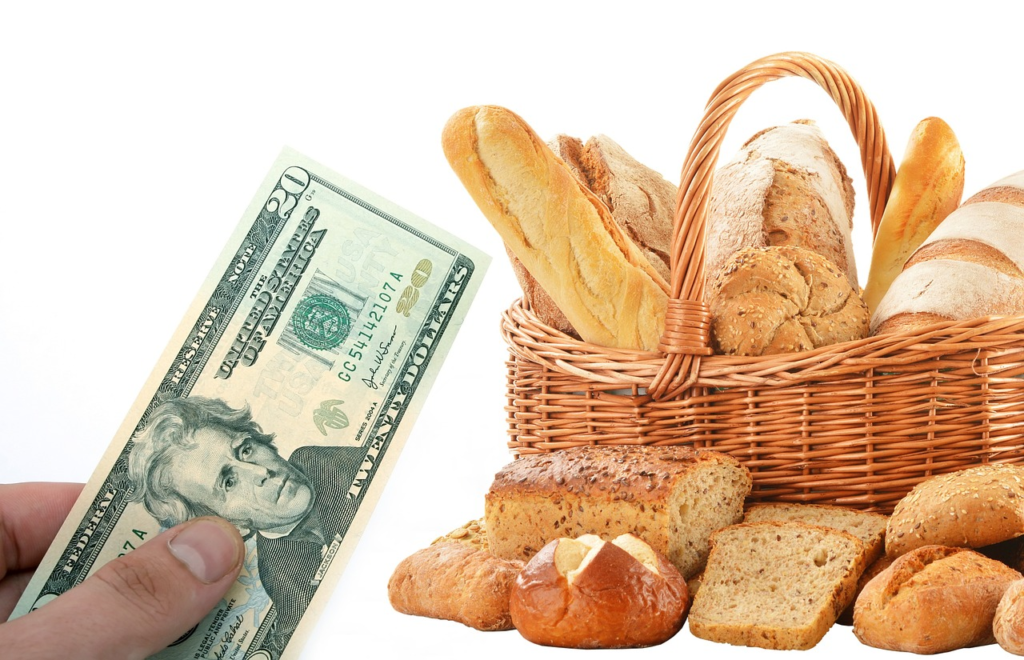Opening a bakery can be a fulfilling and profitable business venture for those with a passion for baking and a love for creating delicious treats. To embark on this exciting journey, it is essential to develop a comprehensive business plan that outlines your goals, strategies, and financial projections.
In this business plan, we will explore the key aspects of starting a bakery, including market analysis, target audience, product offerings, operational considerations, marketing strategies, and financial planning.
By following this plan and adapting it to your specific circumstances, you can lay a solid foundation for a successful bakery business.
What Is A Bakery?
A bakery is a business that specializes in producing and selling baked goods. It is a place where various types of bread, pastries, cakes, cookies, pies, and other baked treats are made and offered to customers. Bakeries can range from small, local establishments to larger commercial operations, and they may offer a combination of retail sales, wholesale distribution, and catering services.
Bakery (Cake Shop) Business Plan Template
1. Executive Summary
- Briefly describe the bakery business, its location, and the vision for the bakery.
- Summarize the key points of the business plan.
2. Business Description

- Provide a detailed overview of the bakery, including its legal structure, ownership, and management team.
- Describe the target market, customer demographics, and competitive advantage.
3. Products and Services
- List and describe the range of baked goods offered, including bread, pastries, cakes, cookies, and any specialty items.
- Highlight unique or signature products that set the bakery apart from competitors.
- Explain any additional services offered, such as custom orders or catering.
4. Market Analysis

- Conduct a thorough analysis of the bakery market, including local and regional competition.
- Identify the target market and its characteristics, preferences, and purchasing behavior.
- Evaluate market trends and growth opportunities in the bakery industry.
5. Marketing and Sales Strategy
- Outline the marketing and advertising strategies to promote the bakery and attract customers.
- Identify target customer segments and how to reach them effectively (e.g., social media, local advertising, partnerships).
- Discuss pricing strategy, promotions, and customer loyalty programs.
6. Operations and Management
- Describe the physical location of the bakery, including the layout, equipment, and facilities needed.
- Outline the staffing requirements and organizational structure, including roles and responsibilities.
- Detail the production process, quality control measures, and inventory management.
7. Financial Projections

- Provide a detailed financial forecast, including startup costs, revenue projections, and operating expenses.
- Prepare a sales forecast based on market research and pricing strategy.
- Include a cash flow statement, balance sheet, and income statement.
8. Funding Request
- Specify the funding needed to start or expand the bakery and outline how it will be used.
- Include a repayment plan for any loans or investment received.
9. Appendix
- Attach any supporting documents, such as licenses, permits, resumes of key personnel, and supplier agreements.
Remember to adapt the business plan template to your specific bakery business, taking into account your location, target market, and unique value proposition. The plan should be comprehensive, realistic, and aligned with your bakery’s goals and objectives.
How To Start A Bakery?
Starting a bakery can be an exciting and fulfilling venture for those passionate about baking and the art of creating delicious treats.
Here is a step-by-step guide on how to start a bakery:
1. Define Your Bakery Concept
- Determine the type of bakery you want to open, such as a bread bakery, pastry shop, cake boutique, or a combination.
- Consider your target market, location, and the unique selling proposition of your bakery.
2. Conduct Market Research

- Identify your target market and understand their preferences, demographics, and buying behaviors.
- Research local competition to assess the demand for your bakery and identify gaps in the market.
3. Create a Business Plan

- Develop a comprehensive business plan that outlines your bakery’s goals, strategies, target market, product offerings, marketing plans, and financial projections.
- Include a thorough analysis of the bakery market, competitive landscape, and a marketing and sales strategy.
4. Secure Financing

- Determine the startup costs, including equipment, supplies, renovation or lease expenses, licenses, and permits.
- Explore funding options such as personal savings, bank loans, or seeking investment from partners or investors.
5. Choose a Location
- Select a location that aligns with your target market and offers good visibility and accessibility.
- Consider factors such as foot traffic, parking availability, competition, and lease terms.
6. Obtain Necessary Permits and Licenses
- Research and acquire the required licenses and permits to operate a bakery in your area, including business licenses, health permits, and food handling certifications.
7. Set Up the Bakery

- Purchase or lease the necessary equipment and bakery supplies.
- Create a layout that optimizes workflow and ensures efficient production.
- Implement proper storage and food safety measures.
8. Develop a Menu
- Create a menu that showcases a variety of baked goods, taking into account popular items, seasonal offerings, and any specialty or unique products you want to offer.
- Source high-quality ingredients and develop recipes that reflect your bakery’s style and brand.
9. Build a Team
- Hire skilled and passionate staff members who align with your bakery’s values and can deliver high-quality products and exceptional customer service.
- Provide training and ongoing support to ensure consistency in product quality and customer experience.
10. Market Your Bakery
- Develop a marketing plan to promote your bakery and attract customers.
- Utilize various channels such as social media, online advertising, local partnerships, and community engagement to create awareness and drive foot traffic to your bakery.
11. Monitor and Adjust
- Regularly evaluate your bakery’s performance, track sales, customer feedback, and adjust your strategies accordingly.
- Stay updated on industry trends, customer preferences, and adapt your offerings and marketing efforts to remain competitive.
Starting a bakery requires careful planning, attention to detail, and a passion for baking. With the right strategies and dedication, you can create a successful bakery that delights customers with delicious treats and establishes a strong reputation in the community.
Tips To Start A Bakery Shop
To start a successful bakery shop, it’s important to implement effective strategies that will set you apart from the competition and attract customers. Here are some strategies to consider:
1. Develop a Unique Selling Proposition
- Identify what makes your bakery special and differentiates it from others.
- Offer unique flavors, specialty products, or emphasize high-quality ingredients.
- Highlight your bakery’s story, values, or commitment to local sourcing.
2. Prioritize Quality and Consistency
- Focus on delivering high-quality products consistently to build customer trust and loyalty.
- Invest in skilled bakers and staff who understand the importance of precision and consistency in baking.
- Source fresh and premium ingredients to ensure the best taste and texture.
3. Create a Diverse and Appealing Menu
- Offer a wide range of baked goods to cater to different tastes and dietary preferences.
- Include popular items like bread, pastries, cakes, cookies, and seasonal specialties.
- Consider offering gluten-free, vegan, or allergen-free options to accommodate various dietary needs.
4. Embrace Creativity and Innovation
- Experiment with new flavors, ingredients, and baking techniques to keep your menu exciting and fresh.
- Introduce limited-edition or seasonal items to create a sense of exclusivity and generate customer interest.
- Stay updated on current baking trends and incorporate them into your offerings.
5. Create an Inviting and Welcoming Atmosphere
- Design a visually appealing and comfortable space for customers to enjoy their baked goods.
- Pay attention to interior design, lighting, and seating arrangements to create a pleasant ambiance.
- Provide friendly and attentive customer service to enhance the overall experience.
6. Build Strong Relationships with Suppliers
- Establish relationships with reliable and quality-conscious suppliers for ingredients and bakery supplies.
- Source local and organic ingredients when possible to support local producers and meet growing customer demands.
7. Leverage Online and Social Media Presence
- Create a professional website that showcases your bakery, menu, and contact information.
- Maintain active social media profiles to engage with customers, share updates, and promote special offers.
- Utilize online platforms for delivery or pre-orders to expand your reach and convenience for customers.
8. Engage with the Local Community
- Participate in local events, festivals, or fundraisers to increase brand visibility and community involvement.
- Collaborate with other local businesses for cross-promotions or joint initiatives.
- Sponsor or donate baked goods to local organizations or charity events to build goodwill.
9. Seek Customer Feedback and Adapt
- Encourage customer feedback and reviews to understand their preferences and areas for improvement.
- Use feedback to refine your products, service, and overall customer experience.
- Stay responsive to customer needs and adapt your offerings accordingly.
10. Implement Effective Marketing and Advertising
- Develop a marketing plan to create awareness and attract customers.
- Utilize traditional advertising methods, such as local print media or radio, as well as digital marketing channels like social media ads, email marketing, and search engine optimization (SEO).
Offer loyalty programs, discounts, or promotions to encourage repeat business.
Bakery Startup Plan FAQs
What permits and licenses are required to start a bakery?
The specific permits and licenses needed may vary depending on your location. Generally, you will require business licenses, food handling permits, health department approvals, and possibly zoning permits. Check with your local government or regulatory agencies to determine the specific requirements.
How much does it cost to start a bakery?
The cost of starting a bakery can vary significantly depending on factors such as the size and location of the bakery, equipment and supplies needed, renovation or lease expenses, staffing costs, and initial inventory. Conduct a thorough financial analysis to estimate the startup costs and create a realistic budget.
How can I find reliable suppliers for ingredients and bakery supplies?
Research local and regional suppliers who specialize in providing quality ingredients and bakery supplies. Attend industry trade shows or join baking associations to connect with suppliers. Ask for recommendations from other bakery owners or join online forums and communities to get insights from fellow bakers.
How can I differentiate my bakery from the competition?
Identify a unique selling proposition that sets your bakery apart, such as offering specialty products, unique flavors, or emphasizing high-quality ingredients. Focus on exceptional customer service, personalized offerings, or creating a welcoming atmosphere in your bakery. Build a strong brand that reflects your bakery’s values and resonates with your target market.
How can I attract customers to my bakery?
Develop a comprehensive marketing strategy that includes online and offline channels. Utilize social media platforms to showcase your products, engage with customers, and promote special offers. Consider local advertising, collaborations with other businesses, and hosting events or workshops to attract customers. Offer promotions, loyalty programs, or referral incentives to encourage repeat business and word-of-mouth referrals.
How can I manage inventory and ensure freshness of baked goods?
Implement effective inventory management systems to track ingredient quantities, monitor expiration dates, and maintain optimal stock levels. Schedule production based on demand to minimize waste and ensure freshness. Establish relationships with reliable suppliers who can provide timely deliveries of fresh ingredients.
How important is customer feedback for a bakery business?
Customer feedback is crucial for understanding customer preferences, identifying areas for improvement, and maintaining customer satisfaction. Encourage customers to provide feedback through surveys, online reviews, or in-person conversations. Use the feedback to make necessary adjustments to your products, service, and overall customer experience.
How can I manage staffing and ensure quality control?
Hire skilled and passionate staff members who align with your bakery’s values and can deliver consistent quality. Provide comprehensive training on baking techniques, food safety, and customer service. Implement quality control measures to ensure consistency in product taste, texture, and presentation.
How can I ensure profitability for my bakery?
Monitor and manage your bakery’s finances closely by tracking revenue, expenses, and profitability. Regularly review and adjust pricing strategies to maintain a balance between profitability and market competitiveness. Continuously evaluate and optimize operational processes to minimize costs and maximize efficiency.
What are the growth opportunities for a bakery business?
Explore avenues for expansion, such as offering catering services, establishing partnerships with local businesses, or exploring wholesale opportunities with restaurants or cafes. Consider diversifying your product offerings or exploring online sales platforms to reach a wider customer base. Continuously innovate and stay updated on industry trends to adapt and capitalize on emerging opportunities.


